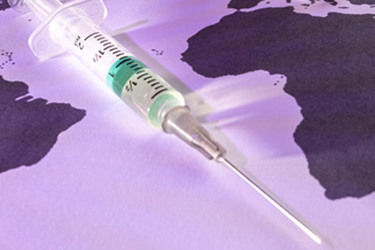Clinical Trial QA Strategies In Low- And Middle-Income Countries
By Allan Gibson, Bill & Melinda Gates Medical Research Institute

Quality assurance is the work that typically resides in the background of clinical trials even though it is the backbone of the trials.
Quality assurance (QA) ensures that the compounds being evaluated in clinical trials are provided to study participants in a safe and effective manner while maintaining the integrity of the clinical trial and the safety and privacy of the study participants. In short, QA is there to assure patient safety.
There are several insights gained around quality assurance coming out of our trials addressing tuberculosis (TB), a leading cause of death worldwide that kills more than a million people every year. The burden of this disease remains greatest in low- and middle-income countries.
Although we have made tremendous progress in the last two decades in the fight against TB, the world needs new interventions to prevent and treat active TB — methods that are shorter and simpler than the current standard of care, have an acceptable safety profile, and are affordable. Finding these interventions is a core part of our work at the Gates Medical Research Institute, and overseeing the quality assurance function in every clinical trial is my responsibility.
Seeing Your Partners As Collaborators, Not Vendors
For clinical trials evaluating potential therapies and vaccine candidates for major public health challenges, the work is centered in low- and middle-income countries (LMICs) as that is where the diseases take the greatest toll. Each trial includes multiple sites, often in different countries; you have to travel to and work at the sites where the patients are. So, we are working in a number of LMICs like South Africa and Pakistan, with many different social and economic contexts. Each trial site involves different subcontractors.
In the behind-the-scenes work of quality assurance, one of our biggest lessons learned is the importance of collaboration with these different subcontractors in LMICs. They are our partners, and we need to ensure they are set up for success. In the pharmaceutical industry, we often call our suppliers “vendors.” But in the work that we’re doing at the Gates MRI, we view them as collaborators. We are a 100 percent virtual company. We have no labs. We contract everything out to our collaborators, so our relationships must be deeper.
When we work in a country, our aim is not to ship product from Europe or India or China to South Africa, where many clinical trials take place. Instead, we want to help South Africa and other countries in Africa be self-sufficient, not just in terms of conducting studies but also in the manufacturing infrastructure. We invest in their success.
For many collaborations in the manufacturing and storage space, before we begin, we walk through facilities and identify challenges, such as how sites segregate different products. Typically, we use the strictest legal requirements of all national regulatory authorities and then factor in the domestic requirements. This helps our trials achieve widely respected results.
After collaborations begin, we conduct routine audits that check all processes and systems. When we find areas needing improvement, we work with suppliers to build up their systems, providing sufficient resources so that they meet these expectations. As these facilities improve and meet higher standards, they can solicit additional contracts and become more successful. Our relationships can deepen as these facilities gain the capacity to take on more work. Both parties enjoy success.
Backup Systems Need Backups
Getting products to LMICs and working with sites within these countries necessitates a whole new paradigm of thinking about quality assurance compared to just working in North America or Europe. It is tougher, both for our organization and our processes.
In keeping supplies of product intact, we need secondary, tertiary, and even a fourth backup plan. An example was in our work in the Phase 2b trial for the M72 tuberculosis vaccine candidate. The compound being evaluated must be stored in a narrow temperature range to maintain potency, yet some of the clinical sites have one refrigerator, maybe two if we are lucky. We needed to determine how to keep the product viable because that keeps the study participants safe. When the product is compromised, we have to start from scratch.
In one part of South Africa, we worked with a facility where the electrical grid was unreliable and, in the middle of the trial, the power failed. Our secondary backup, a diesel generator, didn't work because the fuel had been siphoned off, and our tertiary back up was solar panels, but they had been stolen.
Our plan D was to ensure contemporaneous supply of products so we could discard potentially compromised supply and ensure the site received a very quick re-supply of products. This in turn required a massive effort from our supply chain team to transport the product from the U.S. to South Africa within 48 hours.
If you’re in such a scenario, your team needs to determine whether enough extra product has been manufactured to satisfy additional clinical demand and then evaluate whether the surplus has been properly stored. Then, determine the logistics of transporting the replacement batch, with a careful eye on maintaining the product’s temperature until it is used in the trial.
In our case, most study participants were able to keep their appointments, which was important as they traveled from quite a distance. For others, some rescheduling was needed and, then, we had to ensure that the new supplies of product were safely stored. The speed of the decision-making process was integral to the smooth functioning of the trial.
The additional expenses required are not insignificant and need to be accounted for — which is why the quality assurance section in the trial’s initial budget always needs to be robust. Clinical trials often have additional quality assurance needs that are not anticipated.
In the end, we were successful. Without the quality assurance work in Phase 2b, the M72 vaccine would not have been properly evaluated. Instead, it has advanced in the clinical trial process to Phase 3. But now, for this new trial, we have many more trial sites – more than 20,000 study participants — eight times as many as participated in the previous trial. The quality assurance needs rise exponentially.
Quality Assurance Includes Study Participants And Their Data
Another key insight we’ve gained is around the added steps that need to be put in place to ensure that confidentiality, data privacy, and informed consent are maintained for participants in LMICs throughout the course of the study. Participants need to know exactly what they signed up for and should be allowed to ask questions of the people on-site who are running the clinical study on our behalf.
In LMICs, we have seen a greater risk of participant dropout as travel difficulties can be compounded by infrastructure issues or extreme weather. Or, if the clinical study is focused on adolescents (for example, in a clinical trial evaluating a childhood vaccine candidate), schools would typically be a primary recruitment location, but efforts can be hampered by lower school enrollment rates among 15- and 16-year-olds.
For some study participants, English is not their first language, and all communications must be translated to ensure consent is maintained. Sometimes, participants cannot read or write. And, in some trial sites in African countries, the village elder must also provide approval. Informed consent requires addressing all of these elements.
Collaborations Help The Science Move Forward
To summarize, building partnerships works better than the more typical vendor-client relationship. In previous quality assurance roles, I used to be the bad guy and only pointed out the problems. But now, I stay an extra day or two and help our partners figure out how to improve. We are invested in their success because without it, we cannot be successful.
Ultimately, we as QA professionals are not there to release the balloons and launch the fireworks. We are there to make sure that everything works well — in an incredibly complicated and sensitive process. And in the end, we have an amazing opportunity to make a difference.
About The Author:
 Allan Gibson is head of quality assurance at Bill & Melinda Gates Medical Research Institute (Gates MRI) and is a quality professional with over 25 years of experience and expertise in compliance, product manufacturing, quality assurance, product quality, and supply chain management. He is experienced in working with leading regulatory authorities, including U.S. FDA, EMA, Health Canada, and Australia’s TGA to obtain product approvals for a wide range of product types, including monoclonal antibodies, viral therapies, and small molecules. Prior to joining Gates MRI, Gibson held various quality and compliance positions of increasing responsibility with Charles River Laboratories, Amgen, and Shire.
Allan Gibson is head of quality assurance at Bill & Melinda Gates Medical Research Institute (Gates MRI) and is a quality professional with over 25 years of experience and expertise in compliance, product manufacturing, quality assurance, product quality, and supply chain management. He is experienced in working with leading regulatory authorities, including U.S. FDA, EMA, Health Canada, and Australia’s TGA to obtain product approvals for a wide range of product types, including monoclonal antibodies, viral therapies, and small molecules. Prior to joining Gates MRI, Gibson held various quality and compliance positions of increasing responsibility with Charles River Laboratories, Amgen, and Shire.
